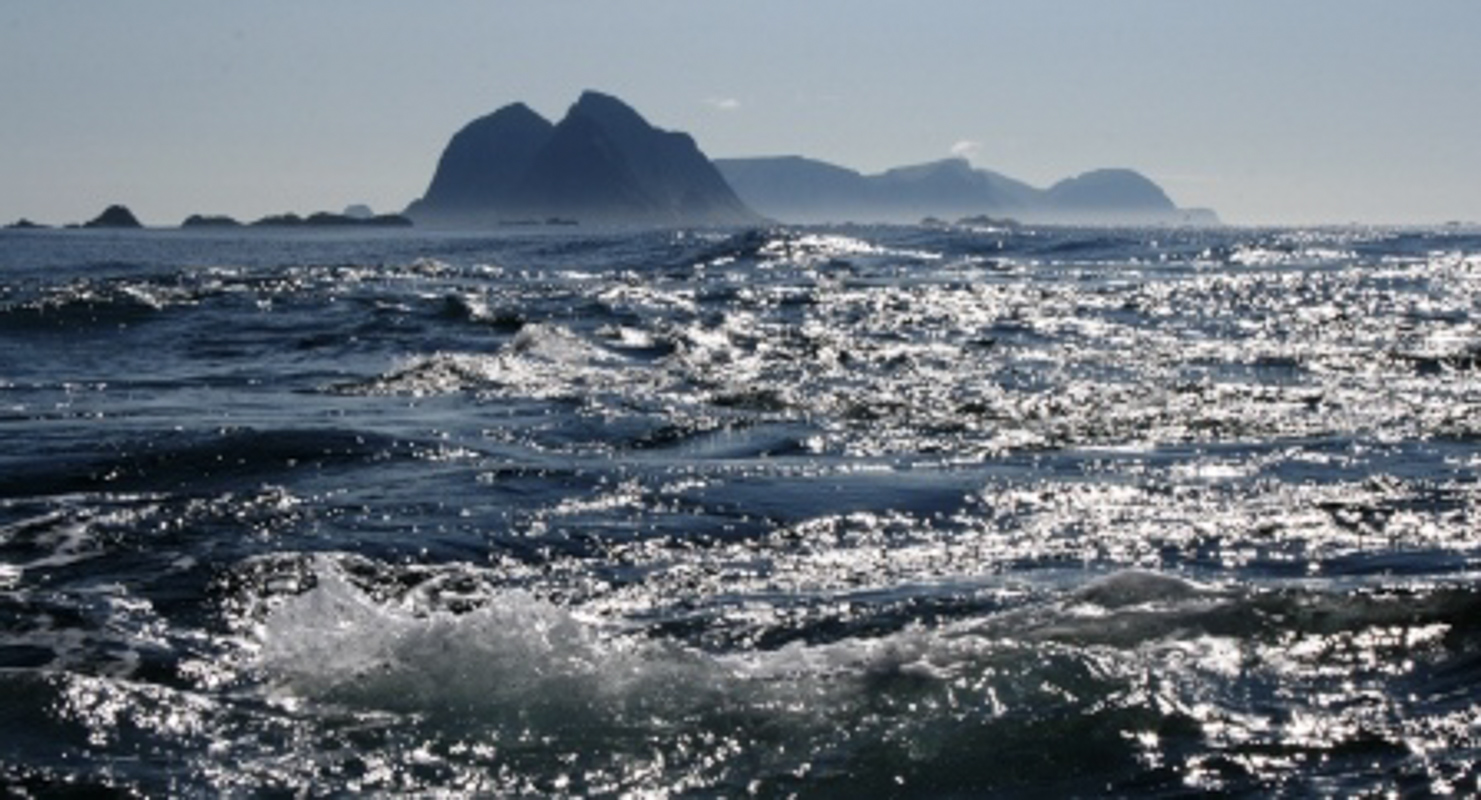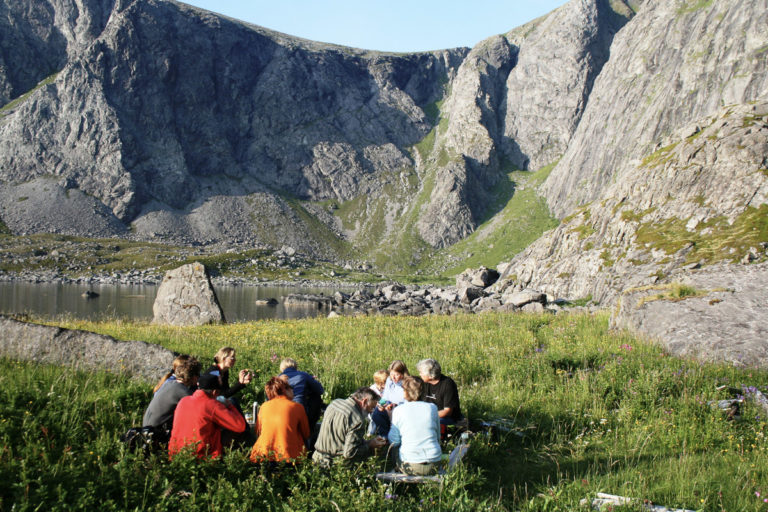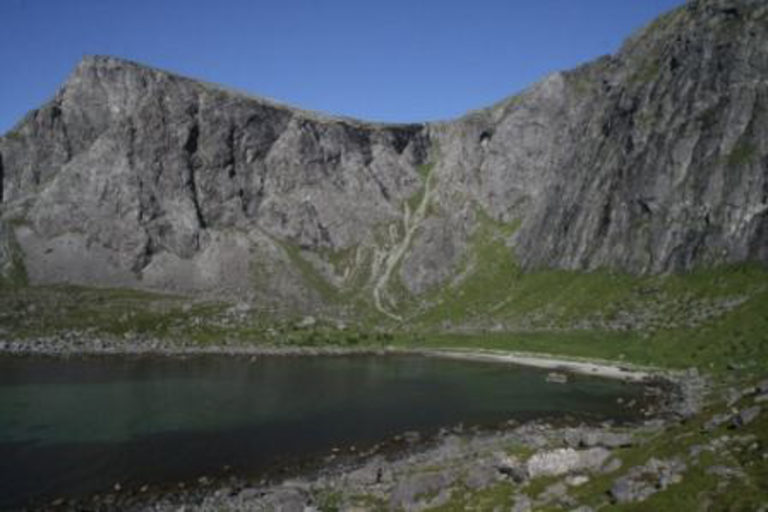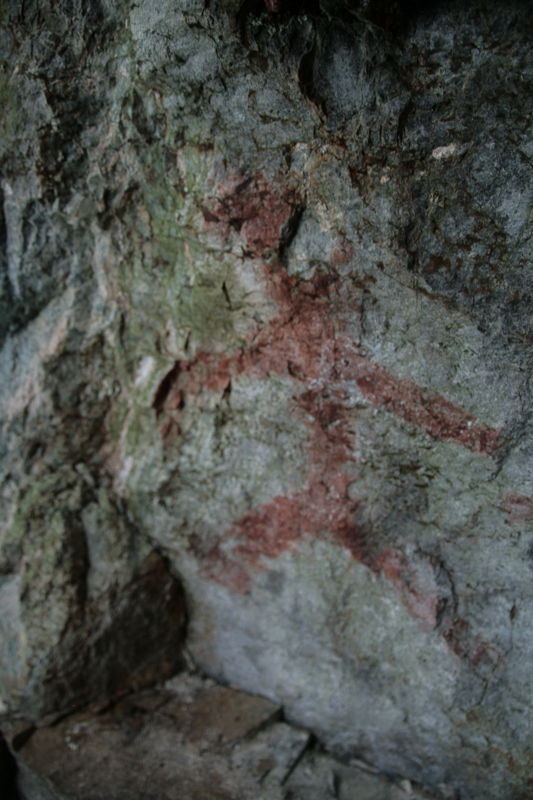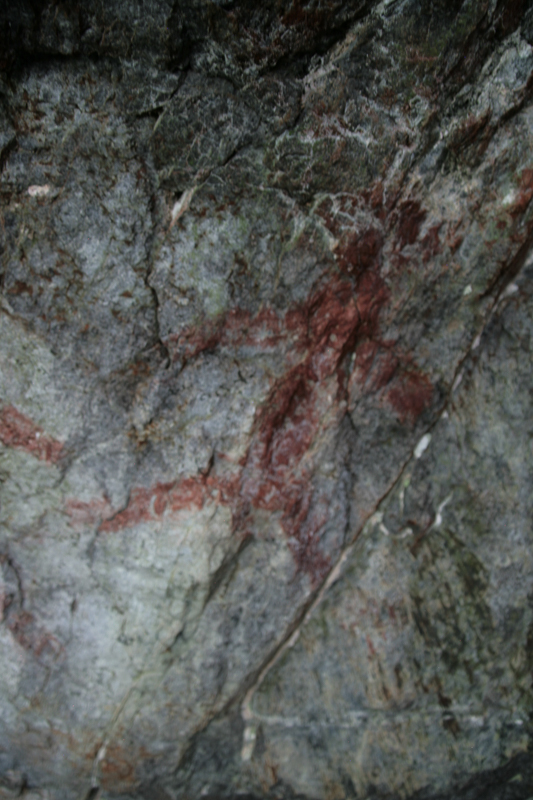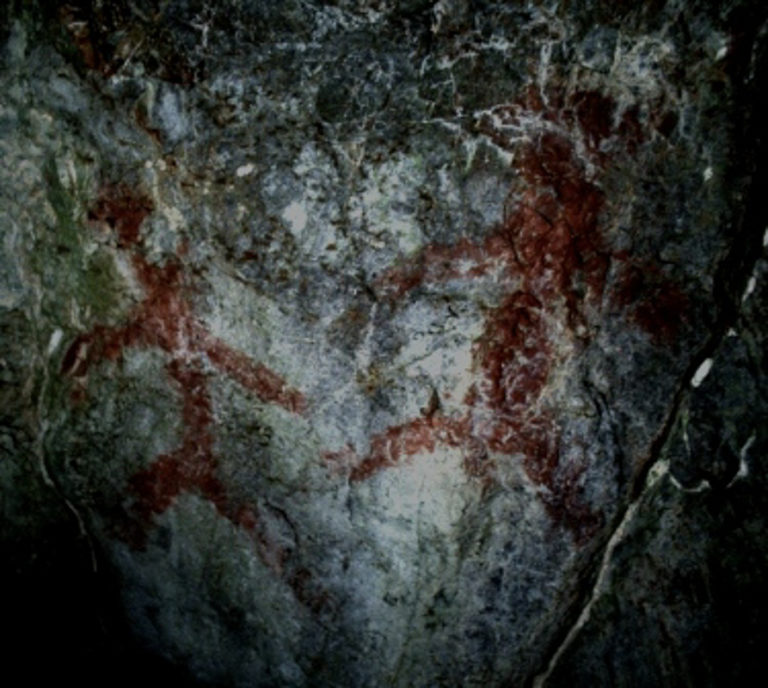You would think that negotiating the famous maelstrom in a RIB boat to see four-thousand-year-old cave paintings would only be for tough guys. But actually, this thrilling tour is suitable for everyone!
From Reine, far out in the Lofoten archipelago, the RIB boat trip heads out to the weather-beaten north-west coast of Moskenesøya Island to visit the cave paintings here, many of which are four-thousand-years old. En route you can see traces of old settlements and you pass through Moskstraumen, the fabled maelstrom of literature.
Maelstrom
Moskstraumen (also known as Moskenesstraumen) is the original maelstrom. It exists because the mountains of Lofoten continue down beneath the surface of the sea like an underwater spine between the islands of Moskenesøya and Mosken, above which the waves created by the tidal waters between Vestfjorden and the North Sea react to the pull of the moon to form a complicated whirlpool that no tidal table can explain. In Jules Verne’s famous novel Twenty Thousand Leagues Under the Sea, the submarine ‘Nautilus’ descends into the maelstrom. Fortunately the captain of the RIB boat is highly experienced and used to reading the currents. The trip is cancelled if conditions are too dangerous.
Cave paintings
The Refsvikhula Cave is a huge, open, cathedral-like cave on the western, outer side of Lofoten. It’s shaped like a cross, and has two entrances. People used to gather here for ceremonies between three and four thousand years ago. On one side of the cave, male figures have been depicted, while female figures can be seen on the other side. The female figures are all quite close together, but the male figures are more scattered. This may reflect the lives they led: women tended to work together in sociable groups, while men were more likely to go hunting alone.
Ceremony room
Without any written sources, we cannot know for certain how the cave was used. However, there are no middens or other remains to indicate that people lived here, which isn’t surprising as the cave is both wet and cold. However, people would gather here for ceremonies, perhaps for transition ceremonies to mark a child’s passing into adulthood. At the summer solstice, the midnight sun reaches right to the back of the cave, and it’s easy to imagine that this would people gathering to celebrate midsummer. After the cave paintings in Refsvikhula were discovered in 1987, more and more cave paintings have been discovered in Lofoten.
Abandoned fishing villages
Å is now the outermost settlement in the row of Lofoten islands that are connected to the mainland by bridges, although it doesn’t lie as far out as the more remote islands of Værøy and Røst, which don’t have a road link. In times gone by, however, people lived in tiny settlements much further out towards Lofotodden at the tip of the island chain. Travelling out towards Å, you can see numerous old settlements, some with houses still standing, while others only have the remains of stone walls and boat ramps. At Helle, almost invisible stone walls and fertile grassy mounds testify to old settlements. Your guide will show you pictures and tell you how the communities came to flourish and then die out.

Refsvika Cave
Book now if you want to experience the Refsvika Cave
